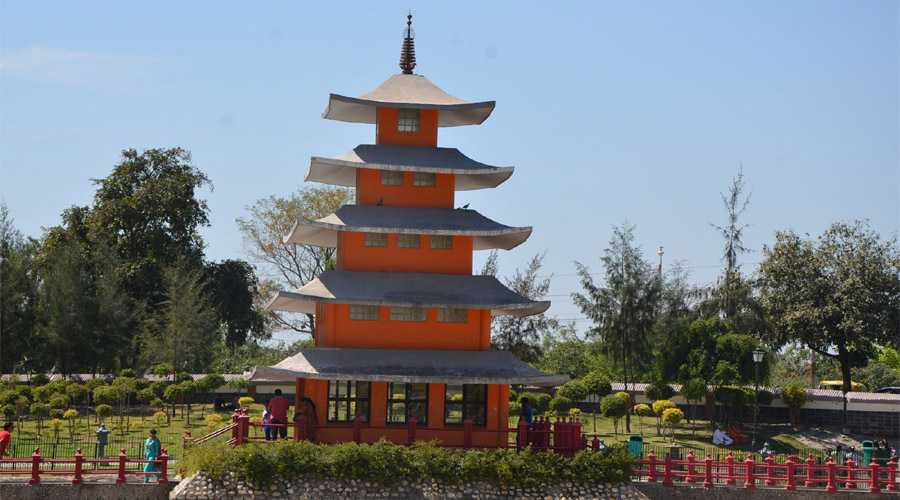Sangam Ghat Prayagraj, located in the holy city of Prayagraj (formerly Allahabad), is a profound spiritual destination and a must-visit for devotees and travelers seeking religious and cultural immersion. It is renowned as the point where the sacred rivers Ganga, Yamuna, and the mythical Saraswati converge, forming what is known as the Triveni Sangam. This confluence is deeply embedded in Hindu mythology and is considered one of the holiest places on earth due to its spiritual cleansing powers and rich historical significance.
Mythological and Religious Significance
According to Hindu scriptures and ancient legends, the Sangam Ghat is where Lord Brahma, the creator deity, performed the very first yajna (sacrificial ritual), marking it as the Tirthraj—the “king of pilgrimages.” The confluence of the three rivers is believed to purify devotees by washing away their sins and liberating their souls from the cycle of birth and rebirth. The Saraswati, though invisible and considered mythical, completes the triumvirate of sacred waters alongside the Ganga and Yamuna, augmenting the site’s sacredness. This sacred meeting is said to have also been blessed during the Samudra Manthan (the churning of the ocean), as drops of Amrit (nectar of immortality) fell here, enhancing its sanctity.
Cultural and Spiritual Experience
Sangam Ghat Prayagraj is not just a geographic confluence but a vibrant cultural hub where faith, tradition, and daily life converge. Pilgrims from all over India and the world visit to take a holy dip, especially during auspicious occasions like the Kumbh Mela and Magh Mela, which draw millions of devotees. Bathing in the Sangam is believed to cleanse past sins and offer spiritual liberation. The site becomes a vast sea of devotion during these festivals, witnessing sacred rituals, prayers, and spiritual gatherings that have continued for centuries. The atmosphere is imbued with chants, hymns, and the scent of incense, making the spiritual experience deeply immersive.
Historic Importance Through the Ages
The significance of Sangam Ghat extends beyond mythology, featuring prominently in historical epochs. The Mauryan emperor Ashoka is said to have erected pillars around the site, underscoring its religious importance. Subsequent rulers, including the Guptas and Mughals, preserved and enhanced the area, reflecting its enduring prominence. During the British colonial era, structures such as the Allahabad Fort were built nearby, cementing the site’s blend of spiritual reverence and historical patrimony. Additionally, the Sangam has been the site for the immersion of ashes of prominent leaders like Mahatma Gandhi, adding to its national and spiritual symbolism.
Spiritual Rituals and Practices
Visitors to Sangam Ghat engage in various rituals and activities designed to connect with divine energies and purify both body and soul. Taking a dip in the holy waters is the primary act of devotion, believed to yield moksha—liberation from the cycle of rebirth. The ghat is also a place for performing “pujas” and offerings, spiritual chanting, meditation, and witnessing the spectacular Ganga Aarti performed at sunset, which creates a serene and divine ambiance. Boat rides on the confluence offer panoramic views and a chance to witness the meeting of the rivers up close.
Kumbh Mela: The Ultimate Spiritual Gathering
Sangam Ghat hosts the Kumbh Mela, the largest religious gathering globally, held every 12 years. This event attracts millions of pilgrims, sadhus, and saints from around the world. They converge here to take a dip in the sacred waters at the astrologically determined auspicious times, believed to impart spiritual merit equivalent to a thousand lifetimes of bathing. The event is meticulously organized, featuring vast temporary tent cities, cultural programs, and religious discourses. The energy and devotion witnessed during Kumbh Mela are unparalleled, making it a once-in-a-lifetime experience for spiritual seekers.
Why Visit Sangam Ghat Prayagraj?
- Spiritual Purification: The holy waters at the Sangam symbolically cleanse the soul, removing sins and granting spiritual renewal.
- Cultural Immersion: Experience the vibrant traditions, rituals, and festivals that showcase India’s rich spiritual heritage.
- Historic Legacy: Walk through a site that has been central to Indian culture and spirituality for millennia.
- Scenic Beauty: Witness the confluence of rivers with distinct colors, surrounded by ghats, temples, and bustling markets.
- Festive Vibrance: Participate or witness the grandeur of Kumbh Mela and other religious festivals at this sacred spot.
Practical Tips for Visitors
The Sangam Ghat is accessible every day from early morning till evening, with the best visiting times around sunrise and sunset for a tranquil experience and to witness the Ganga Aarti. Pilgrims and tourists are advised to respect local customs, maintain cleanliness, and be mindful of safety during crowded festivals. Boat rides and guided tours are available to explore the confluence more deeply.
In summary, Sangam Ghat Prayagraj is a must-visit spiritual destination that transcends mere sightseeing to offer a deeply transformative experience. Its religious significance as the confluence of three sacred rivers, its mythological and historical roots, and its vibrant cultural life make it a unique blend of faith, tradition, and natural beauty. Whether seeking spiritual awakening, historical insights, or cultural immersion, Sangam Ghat stands as an eternal beacon of divine energy and Indian heritage, calling visitors to explore its timeless magic.



